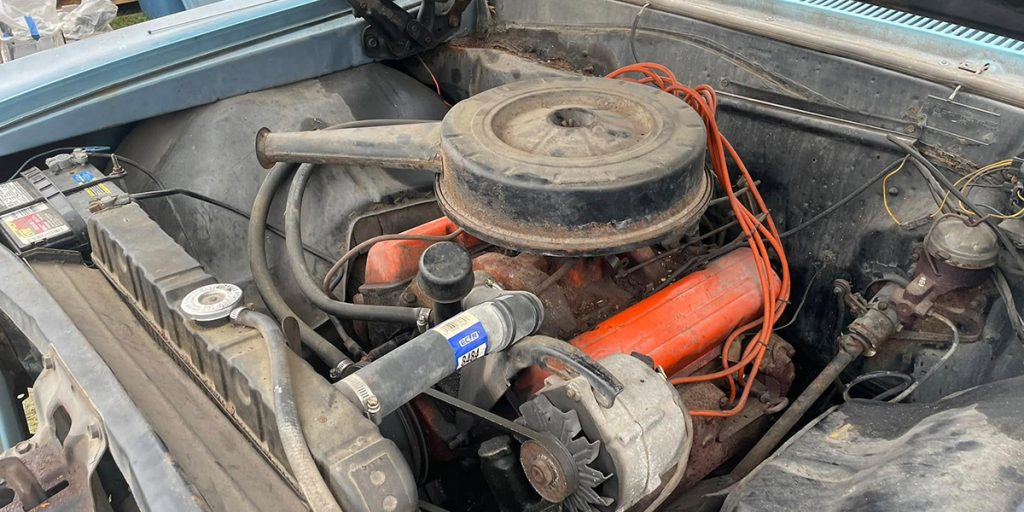
1964–1972 Chevelle Small Block Identification Guide
When it comes to restoring or verifying the originality of your Chevelle, correctly identifying the small block under the hood an important step. After all,
Installing sound deadening in your classic isn’t a hard job. Having modern sound deadening pays dividends every time you drive the car by making your interior quieter and more comfortable to drive.
Reduced Road Noise:
Enhanced Thermal Insulation:
Improved Audio Quality:
Vibration Control:
We’re always looking to save a buck when restoring cars. We’ve also seen the peel-and-stick asphalt at our local home improvement store – so why not use that? There’s a bit of a debate on which one works better, but most people will tell you butyl rubber-based sound deadening is hands down better than any asphalt product.
First, installation is much easier with a butyl rubber-based product. It conforms to the contours of your floor pan or wherever you put it. Butyl rubber also doesn’t harden and crack or lose adhesion like its asphalt counterparts. Another important factor is asphalt-based will give off odors – nobody wants that!
Sound comes from something vibrating. Think of a speaker, it’s a cone that’s vibrating which gives us sound. In our classic cars, a majority of that is from the sheet metal itself vibrating from the engine or driving down the road.
How sound deadener works is by eliminating or slowing down those vibrations. Think of your floor pan vibrating(even microscopically) when driving. Sound deadening slows down or even eliminates that vibration to allow for a quieter ride.
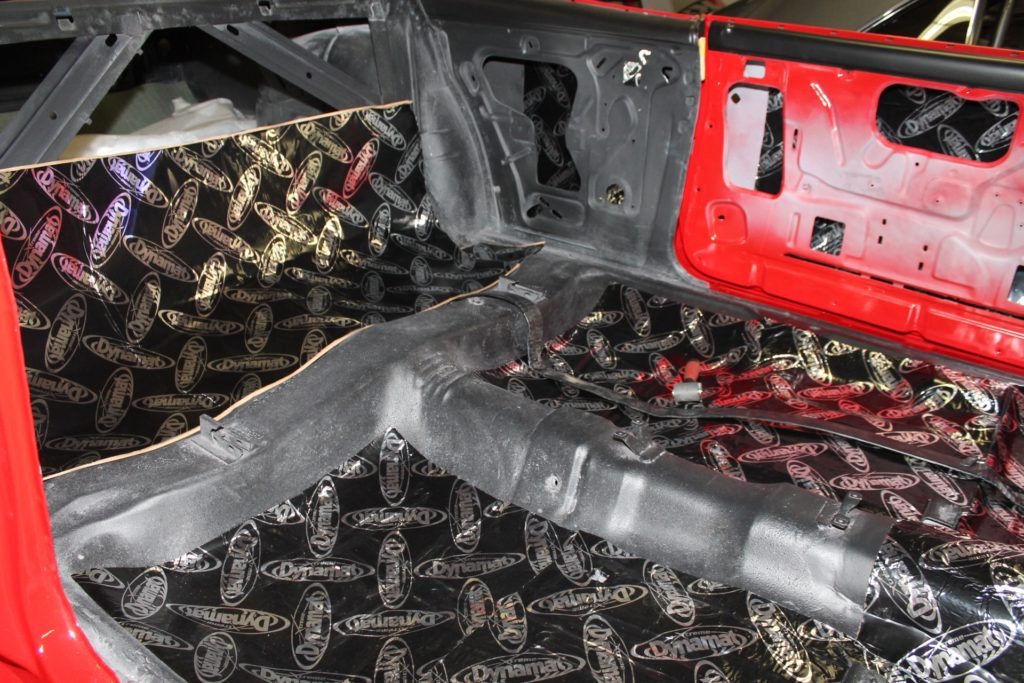
In addition to the reduction in vibration, the added rubber acts as a sound insulator to help absorb sound waves resulting in a much quieter car overall.
Simply put, wherever you can! Think about how a sound deadener works, by slowing vibrations. That means just about anywhere you can stick a sound deadener, the better overall it is. Do you need to put it on every square inch possible? No – generally covering a panel with at least 60% sound deadening will help to reduce noise. But if you can cover a section more than that, even better.
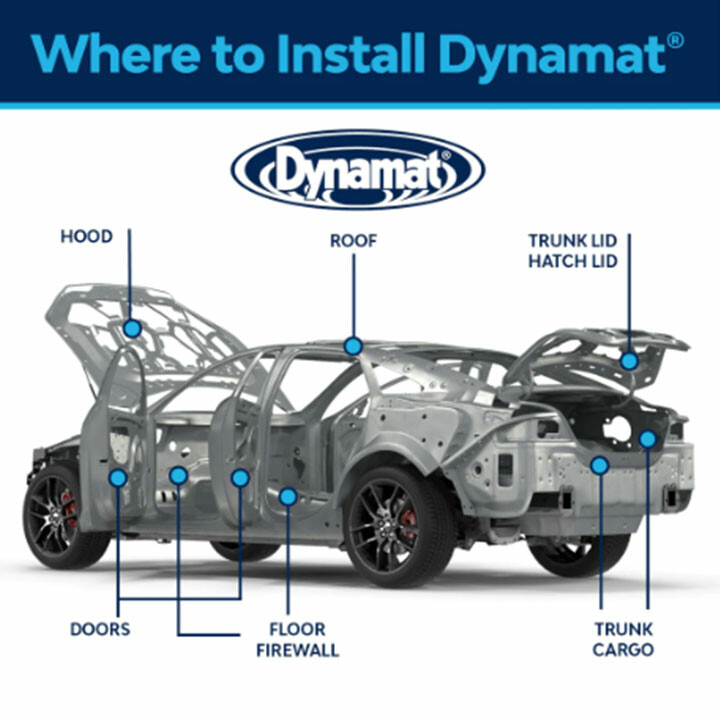
So where should you put sound deadening? For the best bang for the buck, start at the firewall work your way down, and cover the entire floor pan. The roof can also be covered if you don’t have a headliner in. Take off your door panels and apply sound deadening to the backside of the door skins.
Remember too that your trunk is basically one large metal speaker vibrating down the road. Adding sound deadening to the floor of the trunk, the quarters and even the trunk lid can make a huge improvement.
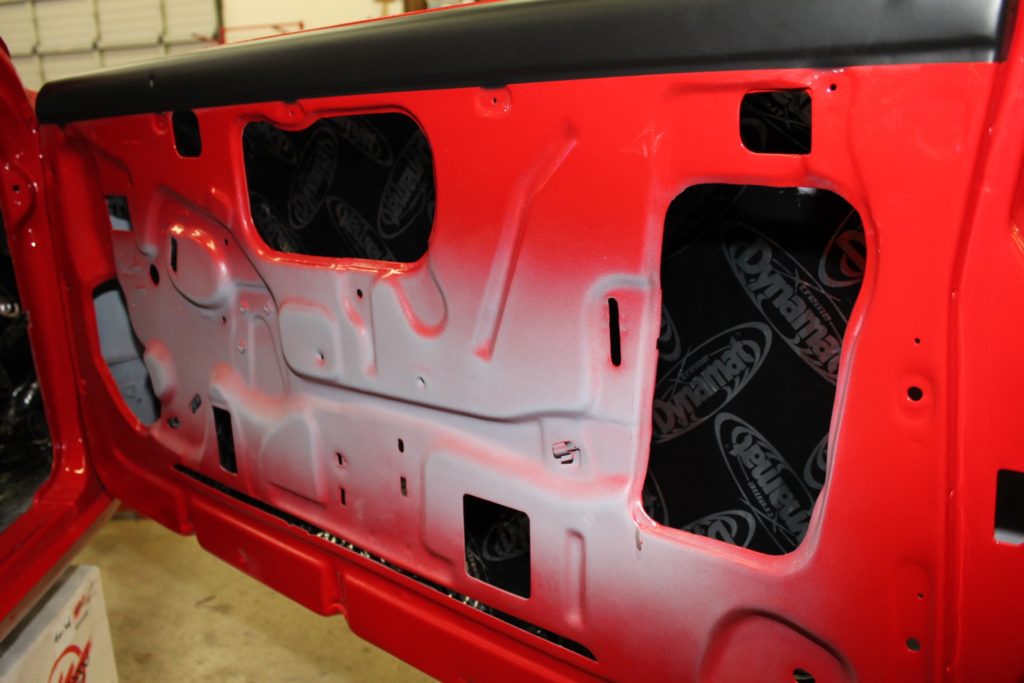
Other areas some might not think about are your rear fenderwells. These are transmitting lots of noise from your tires, so cover them as much as possible. Another area is under the hood since that’s one large piece of metal.
Have you ever used a sticker? Then that’s about how easy it is to apply our Dynamat Sound Deadener! It’s designed to peel and stick, just like a sticker.
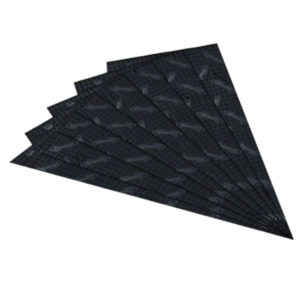
Like any job, the first step is preparation. If you have an interior, you’ll need to remove the seats, carpet, and door panels at a minimum. Before you start sticking, take a vacuum and clean up any loose dirt and debris on surfaces. If there’s dirt, then the sound deadener can’t stick which means it can’t do its job.
One thing you don’t want to do is stick one huge sheet all at once. If there are contours the Dynamat Sound Deadening needs to go on, smaller pieces are easier to work with. Another big thing is after you have stuck the Sound Deadener down, you need to use a roller to apply extra pressure to ensure it’s stuck. A tip is to use the handle end of a screwdriver to push down the edges and middle of the sound deadener.
While there’s a fair amount of work required to install a Sound Deadener, it’s not a hard job. If you need any Sound Deadener, hop on SS396.com or give our friendly techs a call at (203) 235-1200!

When it comes to restoring or verifying the originality of your Chevelle, correctly identifying the small block under the hood an important step. After all,

Ported vs. Manifold Vacuum for Distributor Vacuum Advance in GM Applications In the world of classic General Motors (GM) engines, proper ignition timing is needed
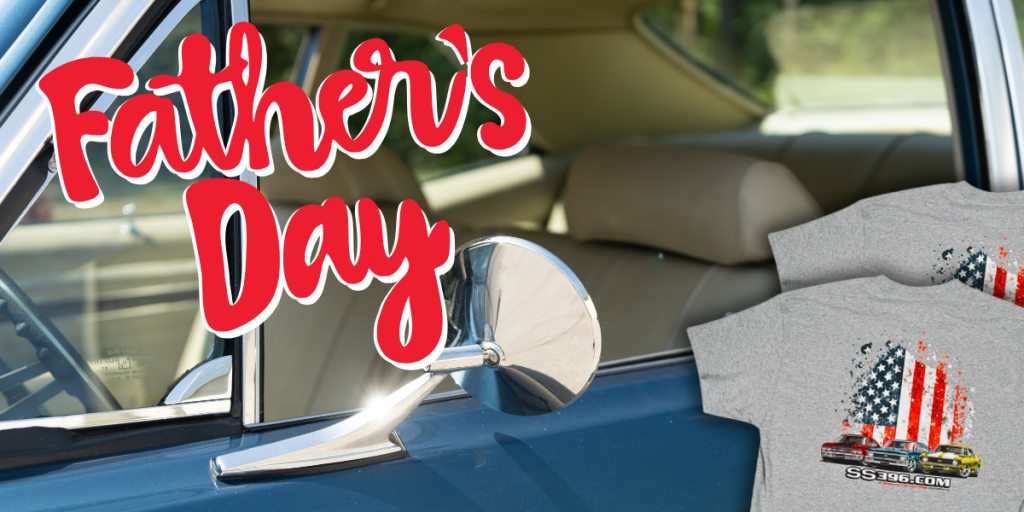
Father’s Day Sale! Get Free Shipping* + a Free T-Shirt when you apply the Code: FTS25 during checkout on orders over $199, valid until 06/15/25 (9pm ET). Don’t miss out on this opportunity to save on the essential parts that keep your restoration moving forward.
